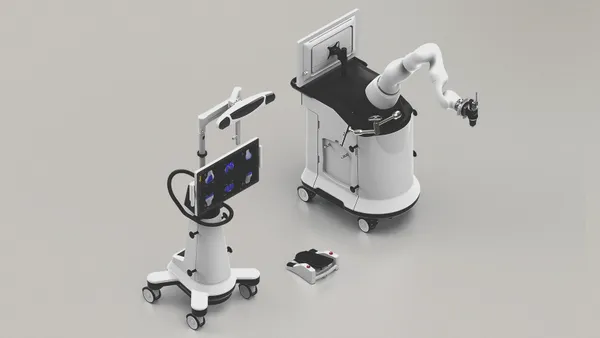Dive Brief:
-
FDA commissioner Scott Gottlieb has detailed the actions the agency is taking to support the development of innovative medical devices.
-
Gottlieb’s comments in a blog post this week cover the FDA’s early experiences with using “sprints” to clear barriers to the development of breakthrough devices, and its plans to build a system to benchmark the performance of artificial intelligence (AI) algorithms.
-
Collectively, the actions are intended to retool the FDA’s capabilities and processes to equip it to accelerate device development without compromising on safety or quality.
Dive Insight:
Since taking up the commissioner post, Gottlieb’s public pronouncements about the FDA’s activities have hit many of the same beats but have generally included some new nuggets of information. A blog post published Wednesday ahead of a planned, but later postponed, Senate committee hearing follows this blueprint.
The new information centers on the FDA’s experiences of rolling out its breakthrough program and streamlining the costliest aspects of medtech trials, plus its upcoming plans for AI benchmarks and oncology device guidance.
It is now 10 months since the FDA posted draft breakthrough device guidance that proposed the use of “sprints” to clear regulatory barriers. This mechanism sees the FDA and a sponsor commit to try to reach an agreement on a pain point within a set amount of time to ensure the problem is resolved quickly. Gottlieb thinks the model is delivering positive results.
“These early interactions have resulted in the development of flexible clinical study designs for certain breakthrough devices and in more FDA review team support and senior management engagement earlier in the development and review process,” he wrote in the blog post.
Gottlieb made the comments days after researchers published an analysis of the evidence used to support the FDA approval of high-risk cardiovascular devices over the past 10 years in JAMA Internal Medicine. The devices were processed under the FDA’s breakthrough program and its antecedents, meaning they could come to market without answering all questions about their risks and benefits.
The analysis shows the FDA approved most of the devices on the strength of single, non-randomized, non-blinded clinical trials that used surrogate endpoints. Many of these studies left scope to doubt the efficacy of the devices. The FDA’s expert advisory panels ruled the data did not show the devices to be effective in more than half the cases it reviewed.
That reflects the FDA’s willingness to accept some uncertainty to get particular products to market. Other activities underway at the agency are designed to accelerate the development of a wider range of devices. Gottlieb highlighted an effort to improve trial site contracting, first-in-patient studies and IRB approval as a way the FDA is trying to cut device development costs and timelines. The FDA is working on guidance to accelerate the development of oncology devices, too.
Gottlieb also provided a glimpse at what the FDA’s AI team is working on. The agency wants to be able to benchmark the performance of AI algorithms that are trained to “correlate features on a PET or MRI scan with the genomic features of tumors.” These algorithms could show whether a person is responding to a treatment, or identify high-risk patients who need monitoring. However, without a standardized benchmark it may be hard to compare the algorithms to each other and humans











